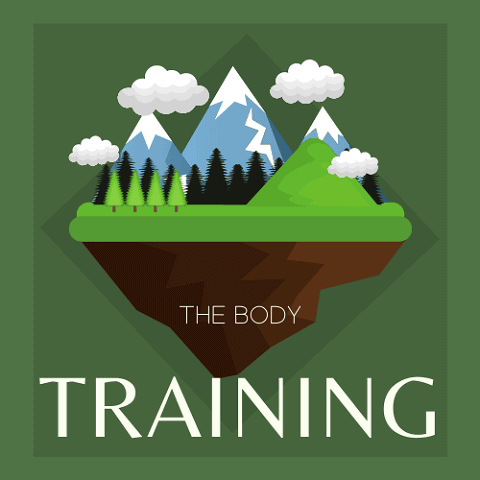Fact checked by Steven Lines, lifelong Hunter, and Outdoorsman .
.
The elk (Cervus Canadensis) is one of the largest members of the deer family that you may encounter. The tracks and signs are similar to other deer, but a few features still set them apart. Learning to distinguish between very similar species can be tricky initially, but it will come with time.
The main difference between elk and moose tracks is their number. Usually, elk travel in a herd (large groups), while moose travel alone. Another feature that differentiates moose and elk is the shape of the toes.
It’s important to mention that you should check which animal you have a license for before pursuing the hunt. Moose (Alces Alces) and elk are two of the most prominent members of the deer family, so it is easy to tell them apart if you know what you need to look out for.
When you can learn how to identify the elk tracks and distinguish them from moose tracks, the chances of viewing and hunting this animal are much higher.
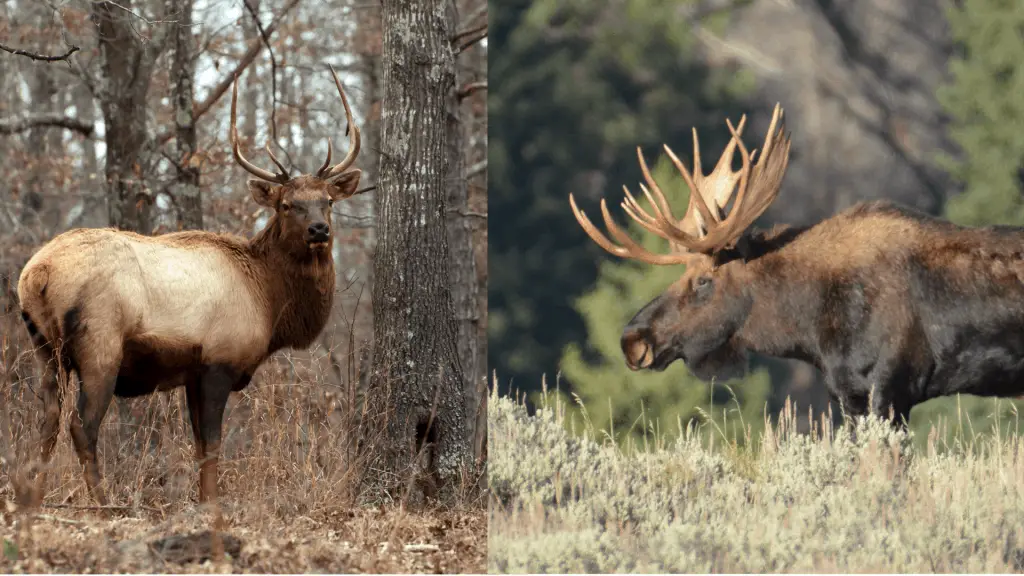
In this post, we'll cover:
How to Identify Elk Tracks?
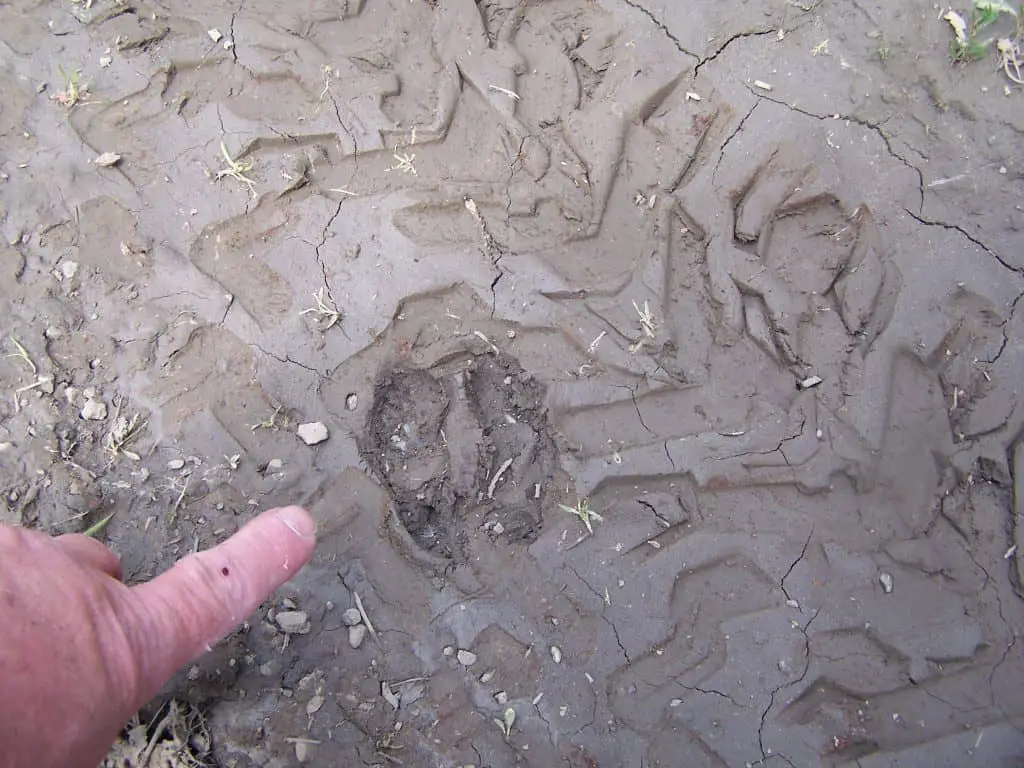
Elk are usually active at dusk and dawn , and they can be frequently seen feeding in prairies during the day. These animals can also be nocturnal. They inhabit woods and pastures. Elk are similar to moose and deer as they belong to one family, but their toes are much rounder and not as sharply tapered at the tips.
, and they can be frequently seen feeding in prairies during the day. These animals can also be nocturnal. They inhabit woods and pastures. Elk are similar to moose and deer as they belong to one family, but their toes are much rounder and not as sharply tapered at the tips.
These are the main features to differentiate elk tracks from other animals. If the elk are galloping, the dewclaws may appear in the tracks.
Before learning to identify the elk track, it’s good to know that elk have cloven hooves. Deer tracks are smaller than elk tracks. Elk tracks are noticeably round. The length of the tracks is usually 4 inches long. Elk have two dewclaws on each foot that are situated higher on the leg. The tracks may also have prints from dewclaws if the animal was running.
Elk usually travel with a step distance of one and a half to three feet. Elk are social animals, which means they travel in big groups. That’s why you may usually find a mess of tracks left by multiple elk rather than clear tracks of a single animal.
There is a possibility that domesticated cattle left the tracks. This may concern you if you are informed that there are cattle in the area. Cattle tracks have a more circular appearance compared to elk tracks.
The widest point in elk trace is lower from the center, while cattle tracks have this point in the middle of the track. Adult cattle tracks are large and blocky and as well as quite distinct. But young cattle leave a track that is often very similar to what an adult elk can leave.
It’s recommended to look around for more distinctive tracks and possible cow chips or other characteristic features of elk tracks in those cases.
The spacing of the toes can also help you to identify elk. The elk most likely left the track if the toes are close at the back. Other animals, which tracks you may initially misidentify as elk, have evenly spaced toes. These animals include deer, moose, and cattle.
How to Identify Moose Tracks?
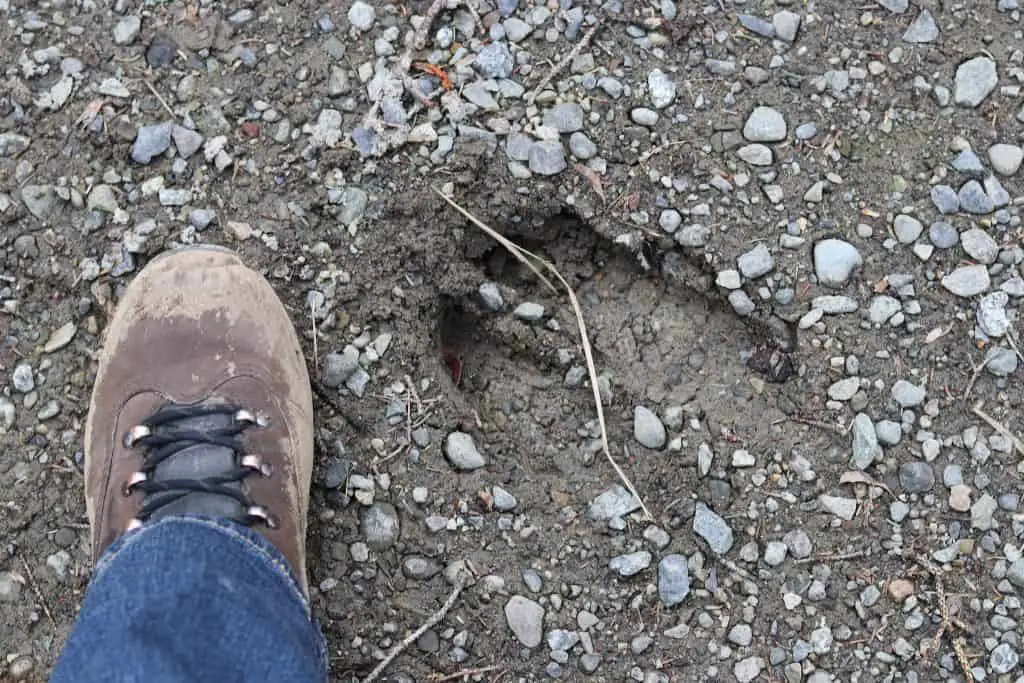
Measuring the size of the tracks will help you identify what animal is in the area. This is also relevant for moose, as their tracks are particularly long. Moose is the largest member of the deer family. Mature bull moose can make tracks that are at least 6 inches long. To compare, the tracks of cows are one inch shorter, and elk tracks are 2 inches shorter.
Elk tracks are 4 inches long, while deers are just 3 inches long. So if you see unknown large tracks, you’ll be easily able to tell that moose left them. Moose can create tracks that have a different shape than those that elk leave. Moose tracks are narrower than elk’s and heart-shaped.
Looking closely, you can also notice dewclaw imprints, which help determine which legs left certain prints. The dewclaws on the hind feet are in the direction of the animal’s travel. The front feet are pointing out to the sides.
Compared to deer tracks, moose leave deeper tracks than others due to the animal’s size and weight. In snow or soft soil, moose tracks may even look like holes in the ground.
It’s also interesting that you can even determine the moose’s age by its tracks. The shape of hooves can show you that. Younger bulls or female moose have pointy and sharp hooves, while older and mature bulls leave wider, heart-shaped prints. The distance between each print can also help you determine if it was left by moose or not.
An adult moose creates a stride that is 30-40 inches long . If the strides are smaller, then other animals in the area probably made them. If the track size fits the descriptions above, but the stride is much longer than 40 inches, then it’s a sign that the moose may have been running.
. If the strides are smaller, then other animals in the area probably made them. If the track size fits the descriptions above, but the stride is much longer than 40 inches, then it’s a sign that the moose may have been running.
If the tracks are messy, or there’s a lot of upturned earth, it’s a sign of running moose. And lastly, the print itself can show you that moose made it if you know how the moose hooves are built. There should be two hooves and two smaller toes behind them.
What Is the Difference Between Tracking Elk and Tracking Moose?
Elk and moose both have very similar features. Elk and moose both have their antlers shed from November till March. Their tracks are also very similar. However, several key features make them easy to differentiate.
Moose have more heart-shaped hooves, while elk have more tooth-shaped, which makes their tracks different. Moose are much heavier, meaning their tracks are deeper. There are also other important features in tracks of moose and elk. For example, elk hooves have rounded toes, and each segment of the hoof is parallel to the other.
The number of tracks is also important, as it helps define what animal was on the trail. If you see hundreds of tracks on the trail, you will likely find the elk tracks as they travel in large groups. It’s a moose sign when you don’t see many tracks, as they travel alone or in small groups, such as a mother and her calf.
Other Animals That Have Similar Tracks to Elk
Ungulate is a clade of primarily large mammals with hooves, and the members of this clade have similar tracks. There are two main groups of ungulates based on the shape of their toes. In one group, the members have toes that form heart-shaped tracks, while the other members have rounded toes.
Moose, deers, elk, bison, cattle, and cows are all ungulate members, meaning they share some similarities in their tracks. However, each animal has some unique features that help hunters see which animal left the tracks easily.
As a renowned outdoorsman and tracker, Tom Brown, Jr. said : “A track is a window to the past of an animal. Look at the ground as if it were a manuscript of the animal’s life.” So if you know what you’re looking for and know the characteristic features of elk’s tracks, you will have no problems identifying the tracks.
: “A track is a window to the past of an animal. Look at the ground as if it were a manuscript of the animal’s life.” So if you know what you’re looking for and know the characteristic features of elk’s tracks, you will have no problems identifying the tracks.
It can be pretty challenging to detect the prints of wild animals. This is because of their instinctive behavior. Reading the tracks is not easy as well. Because each situation during the bow hunt can be somewhat different, that’s why you must be prepared to use your intuition. In that way, you will be able to interpret what you see on the ground.
can be somewhat different, that’s why you must be prepared to use your intuition. In that way, you will be able to interpret what you see on the ground.
It would help if you understood that what you see in images and drawing online can be different from what you find outdoors. A track in the mud or wallow may look much different from one left in the dust or snow, even if the same wild animal has left them. Moreover, it’s essential to understand that animal tracks left in snow can change after the sun’s warmth distorts it.
Also, differences in tracks may appear if animals of different ages and sex leave them. There will be many cases when you may not identify the track on the ground, as no main characteristic features are present.
For example, the track doesn’t show all the toes. In this situation, it would be great to find other tracks on the trail or identify the possible direction where the animals went.
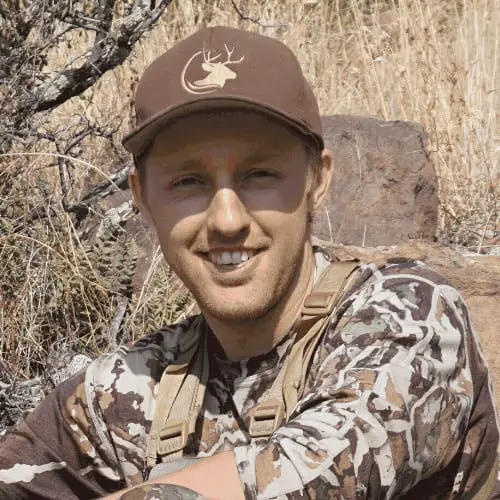
Steven Lines is a hunter and outdoorsman from Safford, Arizona, USA. Since he was a child, he has been hunting and fishing and has over 20 years of outdoor experience. Steven works as a hunting guide in Arizona during his spare time and runs a Youtube channel dedicated to sharing his outdoor adventures with others.
dedicated to sharing his outdoor adventures with others.
Sources
- “Moose track” by KatmaiNPS
 is marked with CC PDM 1.0
is marked with CC PDM 1.0
- https://www.livescience.com/54313-elk-facts.html

- https://www.eduscapes.com/nature/moose/index1.htm

- https://outdooraction.princeton.edu/nature/guide-animal-tracking

